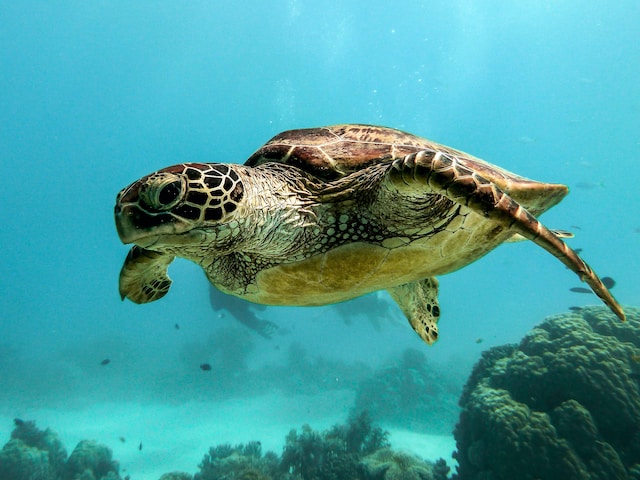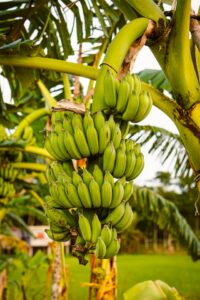The Belize Barrier Reef is one of the world’s most significant marine environments and draws visitors from all corners to experience its stunning pristine beauty. Designated as a UNESCO World Heritage Site and housing numerous endangered species, its beauty can be enjoyed by all who visit its waters.
Coral reefs form hard outer protective layers made up of calcium carbonate secreted by coral polyps, providing homes to over 70 hard and soft coral species, 500 fish species, and thousands of invertebrate organisms.
The Belize Barrier Reef: A Natural Wonder
As one of the world’s most stunning and biodiverse natural wonders, the Belize Barrier Reef draws visitors from around the globe. This remarkable marine habitat boasts hundreds of species of coral, fish, sea turtles, mollusks and other creatures – not to mention providing jobs for over 200,000 Belizean workers through tourism, recreational activities such as snorkeling and scuba diving and protection against storm damage to coastal regions.
Scientists have documented over 70 species of hard and soft coral, 500 varieties of fish, and other marine creatures living within this unique ecosystem. Although it faces threats such as pollution, climate change and trawling, the Belize Barrier Reef was still declared a UNESCO World Heritage Site back in 1996 and attracts tourists from around the globe.
WWF’s continued efforts to protect nesting sites and cutting-edge coral restoration projects like those at Laughing Bird Caye are providing hope for the future of these natural wonders.
Biodiversity of the Belize Barrier Reef
The Belize Barrier Reef is home to an array of marine life, such as whale sharks, dolphins and manatees. Additionally, this massive ecosystem encompasses hundreds of small islands known as cayes as well as three coral atolls (Turneffe Lighthouse Glover’s) visible even from space!
Reef waters teem with life, from sea turtles and mangroves that protect young creatures to coastal construction projects and oil exploration activities that threaten marine ecosystems. But reef ecosystems may soon be destabilized due to coastal construction projects, trawling operations, or oil exploration efforts.
One of the key factors contributing to reef health is herbivorous parrotfish, which eat algae that threatens coral. Unfortunately, scientists have discovered that their numbers in Belize have declined due to overfishing; this has had an adverse impact on coral health; coverage has already declined in some areas of its reef system, which provides fishing industries and tourism jobs as well as being recognized as a UNESCO World Heritage Site and one of nature’s greatest wonders.
Ecological Significance and Importance
The Belize Barrier Reef’s stunning beauty and ecological significance have long attracted scientists, scholars, filmmakers, and celebrities such as evolutionary pioneer Charles Darwin and French marine biologist Jacques Cousteau. Now tourists flock here in droves for snorkeling, diving and boating activities on its coral-rich waters.
The Reef’s deep blue water and tropical temperatures make it an ideal location for aquatic adventures such as scuba diving and other aquatic sports. Home to 70 hard coral, 36 soft coral and 500 fish species; as well as endangered wildlife such as green turtles (loggerhead and hawksbill), West Indian manatees and American marine crocodiles – The Reef provides the ideal setting for these aquatic activities!
Coral reefs require both clear water and consistent temperatures to thrive; any fluctuations can have serious ramifications for their survival – specifically changes that affect symbiotic algae that give coral its vibrant colors and their protective skeletons, leaving the coral vulnerable and bleached out. WWF is working tirelessly to preserve this precious site by advocating for improved management of atolls, sand cayes and coastal lagoons in order to increase coral health while decreasing threats posed by three different turtle populations that live here.
Threats and Conservation Efforts
The Belize Barrier Reef is an extensive marine ecosystem composed of coral reefs, mangrove forests, coastal lagoons and estuaries. Home to endangered species like marine turtles, saltwater manatees and American crocodiles.
Oceana, WWF and Belize Audubon Society have worked tirelessly to advocate for protecting the Belize Barrier Reef, leading to greater governmental commitment towards this vital ecosystem. Bottom trawling has now been prohibited while important fish species have been safeguarded and oil exploration near this World Heritage Site has been prohibited by way of moratorium orders issued by government authorities.
Reversal would not have been possible without widespread public awareness and commitment from local communities, especially at Laughing Bird Caye where coral nurseries demonstrate the impact of an effective fishing ban against reef-grazing parrotfish introduced in 2009. This ban demonstrates how communities can unite to urge governments to make significant changes; furthermore it shows that when applied correctly restorative processes can assist even severely damaged reefs to recover.
Economic Impact on Tourism and Fisheries
The Belize Barrier Reef is an invaluable asset to Belize. It serves as a catalyst for coastal tourism, which contributes 41% of GDP. Tourism fuels 139,000 residents who reside along its coastlines; coral reefs play an equally crucial role in supporting fisheries that provide much of Belize’s food supply.
Because these and other ecosystem services were so vital to Belize, effective protections have become paramount over time. Belize instituted an indefinite moratorium on offshore oil exploration, tightened development restrictions, and attempted to curb overfishing; their efforts ultimately bore fruit when in 2018, UNESCO removed Belize Barrier Reef Reserve System from their List of World Heritage Sites at Risk.
An increasing number of Belizeans recognize the value of the ocean and are taking steps to preserve it for future generations. Many have been inspired by projects like Fragments of Hope to work to safeguard this precious natural resource.
Cultural Connection to Belizean Heritage
Belize’s reef is an integral part of their culture and economy, providing generations with income through fisheries and tourism industries as well as habitat for marine and other wildlife, serving as an outdoor recreational venue for locals and tourists alike who come here for world-class snorkelling, diving, sailing, sport fishing and birdwatching activities – no wonder Charles Darwin called it “the most remarkable reef in Western Hemisphere”).
In 2018, the Belize Barrier Reef Reserve System was removed from UNESCO’s list of World Heritage Sites in Danger thanks to efforts made by both state party and civil society to address threats such as oil exploration in its maritime zone, as well as measures designed to limit inappropriate land development within its serial site.
The Belize Barrier Reef, one of the two largest reefs in the world, stretches 180 miles off of Central American nation Belize. Comprised of living colonies of coral polyps whose carnivorous habits create hard exoskeleton called corallites – at nighttime they use tentacles to sting floating organic material to sustain themselves with sustenance.
UNESCO World Heritage Site Status
UNESCO honored the Belize Barrier Reef as one of Earth’s most breathtaking marine environments and designated it as a World Heritage Site in 1996. As the largest coral reef system in all of Northern Hemisphere, it encompasses hundreds of sand cayes, offshore atolls, mangrove forests, coastal lagoons and estuaries that form a magnificent underwater spectacle home to 70 hard coral species, 36 soft coral species, 500 fish species as well as three types of nesting sea turtles.
WWF is working to protect Belize’s Barrier Reef through advocating for better management. Already, bottom trawling has been banned and most single-use plastics removed by law in Belize. WWF’s persistent pressure to protect nesting site protection helps stabilize turtle populations while our innovative reef restoration projects such as Laughing Bird Caye increase coral planting on this precious natural asset.
One of the most iconic features of Belize Barrier Reef is the Great Blue Hole, first explored by French diver Jacques Cousteau back in 1971. Our Lighthouse Reef Basecamp on Half Moon Caye provides an excellent platform from which to snorkel or dive this world-famous dive site.
Preserving the Future of the Belize Barrier Reef
Belize stands as an inspiring example in combatting worldwide threats to coral reefs. Their coral reefs support an expansive tourist economy, provide natural protection from hurricanes and coastal development projects, as well as contributing significantly to Belize’s national GDP.
Located off the coast of Belize, its pristine ecosystem provides shelter to endangered species like hawksbill turtles, manatees and sharks as well as several important fish species and an array of sea life. Yet climate change, warming waters, bottom trawling, overfishing, pollution, unchecked coastal development and other human impacts threaten its health and its inhabitants are at risk from its health impacting on them.
Hurricane Iris’ devastation to Belize’s tourism industry and marine life caused irreparable damage. Following this natural disaster, UNESCO listed Belize’s reef system on its World Heritage in Danger list; since then the country has implemented stricter environmental laws, banned bottom trawling in its territorial waters, and stopped oil exploration near reefs to giving this second-largest barrier reef a fighting chance to rebound into greater splendor in future.




